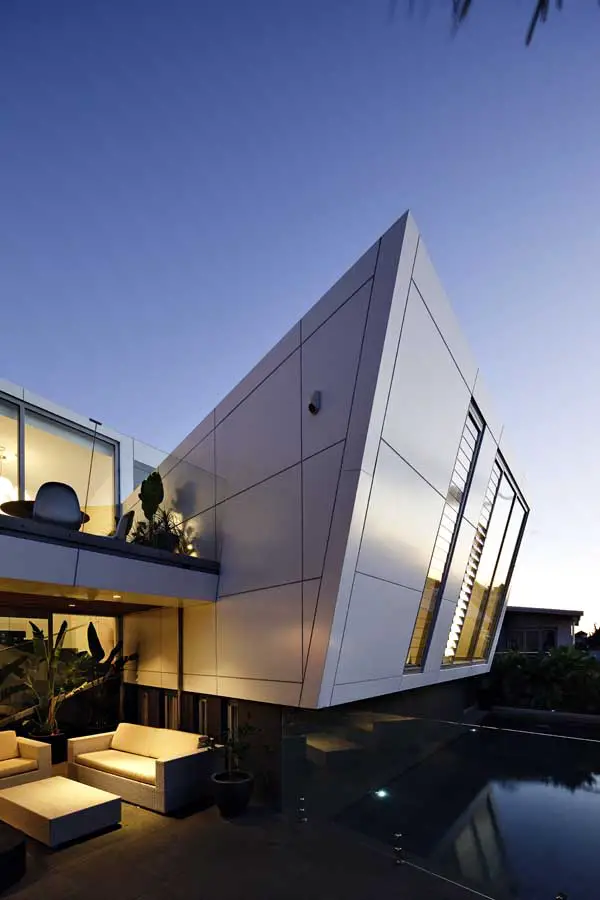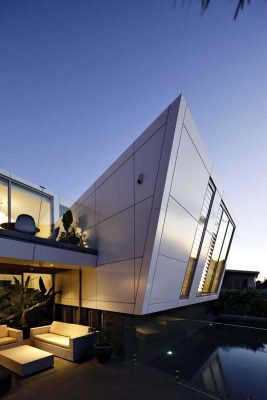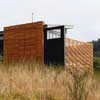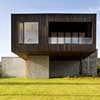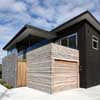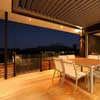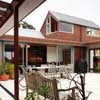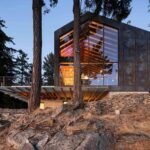Waikato Bay of Plenty Architecture Awards, NZIA 2010, New Zealand Buildings, Architects
Waikato Bay of Plenty Architecture Awards
NZIA 2010 : New Zealand Prize Winners
1 Nov 2010
Waikato Bay of Plenty Architecture Awards Winners
A “one of a kind house”, a groundbreaking eco classroom and the Waitomo Glowworm Cave Visitor Centre are among designs celebrated in the 2010 Waikato Bay of Plenty Architecture Awards.
Waitomo Glowworm Cave Visitor Centre:

photo from NZIA
The Waikato Bay of Plenty Architecture Awards programme, organised and run by the New Zealand Institute of Architects and supported by Resene, attracted a significant number of entries, with 42 submissions.
Taupo-based architect Sean Harris, a member of the jury panel, said the standard had been very good, with a range of different projects spread widely throughout the region.
“There was a broad spectrum in the residential categories from those built on very modest budgets to the top end of the market,” he said.
Coromandel Beach House:

photos from NZIA
“We visited all entries and enjoyed meeting the owners and seeing how enthusiastic they were about their architects’ work and the way they had interpreted the brief.”
Waikato Bay of Plenty Architecture Awards – Buildings in moe detail:
Fascinating house with bow tie shaped floor
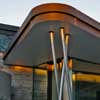



photos from NZIA
The Fussell House, by Richard Priest Architecture, on the edge of the Purangi River estuary at Whitianga, was a winner in Residential Architecture – Houses, praised as a “fascinating house” which is “impressive in concept and form”.
Jurors admired the “bow-tie shaped” floor plan, with living areas overlooking Mercury Bay and agreed that “the client’s request for a signature styled, one-of-a-kind home has been delivered with interest”.
Groundbreaking EnviroClassroom
The Hukanui EnviroClassroom “The Living Room” at Hukanui School in Hamilton, by Antanas Procuta Architects, was the only winner in the Sustainable Architecture Category.
The classroom, hailed by jurors as “groundbreaking” was designed and built with input from students at every stage and includes unique sustainable features.
Jurors described it as a “living laboratory that enables students to understand building environments, passive systems and how these systems can be modified to achieve a healthy and comfortable space”.
Glowing citation for Glowworm cave

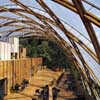
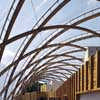
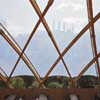
photos from NZIA
The extensive Waitomo Glowworm Cave Visitor Centre, which includes an innovative woven canopy, charmed jurors with its organic form and the way it flows beneath the road.
Jurors said the project, by Architecture Workshop, a winner in the Commercial Architecture category, reinforced the idea of “a simple lightweight sky shell to act as a counterpoint to the main subterranean attraction”.
Mr Harris said: “The experience starts as soon as you arrive. The visitor centre is part of the whole journey into the caves.”
Commercial Architecture winners
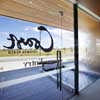

photos from NZIA
Commercial Architecture winners also included The Fraser Papamoa project, by Ambienti Architects, a “flexible” sales office for the Coast Papamoa Beach residential development at Mount Maunganui which was seen as an innovative approach to marketing offices and showroom.
The twin level pavilion, admired by jurors for its “crisp clean lines” has been designed so that it can be transformed, when required, into a community facility – potentially with café, shops and offices.
The APL Training Facility in Hamilton, by Edwards White Architects, is an extensive renovation of an existing building to provide a training centre for a national business.
Jurors said that the sustainable approach taken to the design had given the previously run down building a new lease of life, making it “a significant visual presence in an otherwise haphazard streetscape”.
The Village Centre, Lauriston Park, by BSW Architects, was admired as “an instantly recognisable entry point” to the Cambridge retirement village providing a “dramatic counterpoint within the peaceful and restful environment”.
Public Architecture
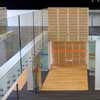
photo from NZIA
Public Architecture winners also included Mount Maunganui College Resource and Research Centre Redevelopment by Dimensions Ltd.
Jurors said that creative planning, major renovation and extensive refurbishment had transformed the original outmoded library to provide a flexible facility that had assumed a new identity and prime position on the college campus.
Mr Harris said jurors were impressed by features such as flexible “study pods” within the building, its multiple uses, including as a Year 13 common room and the clear enjoyment of students using the facility.
The Glenview Primary School – New Library by Peddle Thorp Architects (Hamilton) was also a winner in the category. Jurors described it as attractive and welcoming, answering its design brief for “something unique” and enjoying “an invigorating and engaging ambience”.
Residential Architecture – Houses
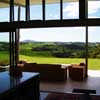
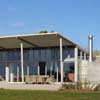
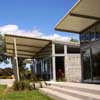
photos from NZIA
A contemporary Country House, North Waikato, at Tuakau, by Kamermans & Co Architects was seen as a “reinterpretation of the ‘New Zealand farm shed’ vernacular,” capturing the sun and majestic views of the Waikato River valley.
Orkney, a distinctive multi-level home at Mount Maunganui by Daniel Marshall Architect, captured jurors’ attention for its flair and imagination and “sharply raking walls that mimic the prows of ships on the nearby harbour”.
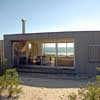
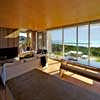


photos from NZIA
A Coromandel Beach House, by Crosson Clarke Carnachan Architects (Auckland) has been likened to a “jewellery box”.
Jurors noted the way “projections and cut outs punctuate the envelope, variously admitting light and capturing specific views.”
The Meldrum House in Tauranga by DHT Architects takes full advantage of a narrow sloping site, providing sweeping views to the inner harbour and Mount Maunganui and beyond.
The Motuoapa House at Turangi, Taupo, by Mark Frazerhurst Architect, was built on a modest budget and is “suitably rugged” for holiday living with planes of tactile materials that filter sunlight through slatted timber screens that blend with the cladding of the exterior.
A modern holiday home, in Nininihi Avenue, Raglan, by Tim Dorrington Architects, was “full of surprises” transforming effortlessly from cosy individual spaces to open plan when required.

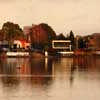
photos from NZIA
The “re-use and transformation of a home in the Hamilton Lake Alterations project by Edwards White Architects, was seen to achieve a “coherent and striking structure that sits comfortably in its surroundings”.
The redevelopment of a lakeside holiday home, Lake Tarawera Bach Alterations, also by Edwards White Architects, was admired as having “resulted in a new home that is sympathetic to its surroundings and offers a higher level of amenity to its owners.”
Additions to the McDonald House at Ohope, by Architecture Page Henderson, are separated from the original house by a new common entrance, providing independent and/or extended family living with small private spaces and a large communal area that opens over outdoor decks to the beach.
Small Project Architecture
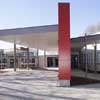
photo from NZIA
Hamilton’s Woodstock Primary School – New Entry & Library Computing Additions by Peddle Thorp Architects (Hamilton) was a winner in the Small Project Architecture category, described by jurors as a bold and welcoming new design which had brought the formerly obscure public entrance to the school to life.
Interior Architecture
The NZI on Collingwood project by Pelorus Architecture was the only winner in the Interior Architecture category.
Jurors praised the sustainable and energy-efficient principles, well managed, open design and clever use of sculptural forms and of colour resulting in “a pleasant working and client environment”.
Jurors
Convenor was Hamilton Architect John Sexton. He was joined on the jury by Architect Mark Wassung, also of Hamilton and Taupo Architect Sean Harris. The lay juror was Monica Holt, communications manager at Hamilton City Council.
Waitomo Glowworm Cave Visitor Centre:
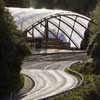
photo from NZIA
About the New Zealand Architecture Awards
The New Zealand Architecture Awards programme was established by the New Zealand Institute of Architects to celebrate the innovation, creativity and excellence of architectural projects nationwide.
The awards are open to all NZIA Practices, and projects can be entered into one or more of 10 categories – Public Architecture, Residential Architecture – Housing, Residential Architecture – Multiple Housing, Commercial Architecture, Urban Design, Interior Architecture, Heritage, Small Project Architecture, Sustainability, and Enduring Architecture.
There is no limit to the number of awards the local jury can make in any category.
The programme has three tiers, progressing from the eight regional awards to national recognition – the New Zealand Architecture Awards – and through to the ultimate accolade, the New Zealand Architecture Medal.
All local winners become eligible for consideration for a New Zealand Architecture Award, decided by a national jury, which includes an overseas judge, in early 2011.
In May at the NZIA’s annual Gala Dinner, the finalists for the New Zealand Architecture Medal will be announced, and the winner named later in the evening. Only one New Zealand Architecture Medal is bestowed each year, in recognition of a single built work.
New Zealand Architecture Awards 2010
New Zealand Architecture Awards – Regional Winners 2010
Auckland Architecture Awards – winners, 19 Oct 2010
NZIA Awards 2010-11

picture from NZIA
Location: Waikato Bay of Plenty, New Zealand
New Zealand Architecture
Contemporary New Zealand Buildings
New Zealand Architecture Designs – chronological list
New Zealand Architecture Studios
Buildings / photos for Waikato Bay of Plenty Architecture Awards page welcome

